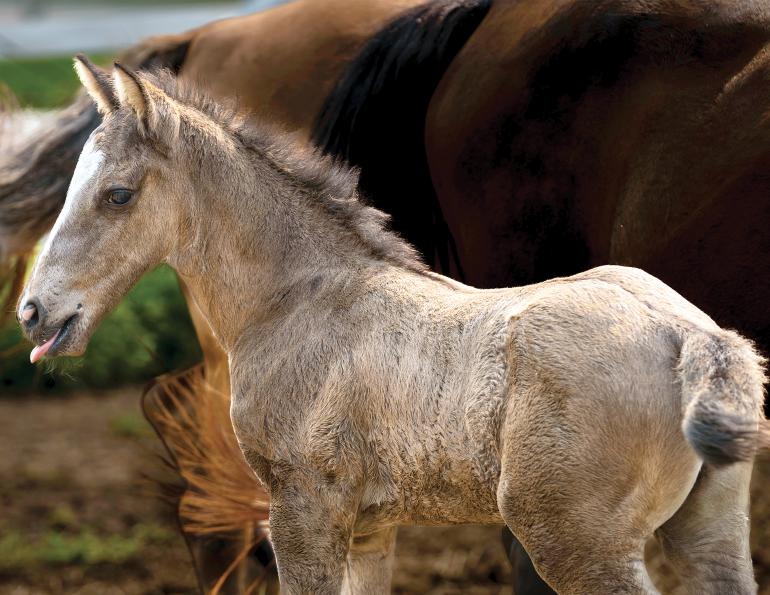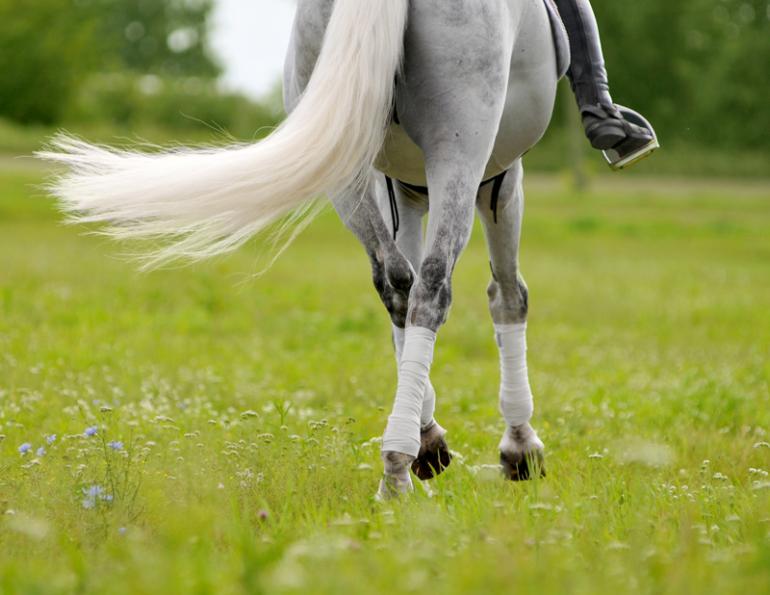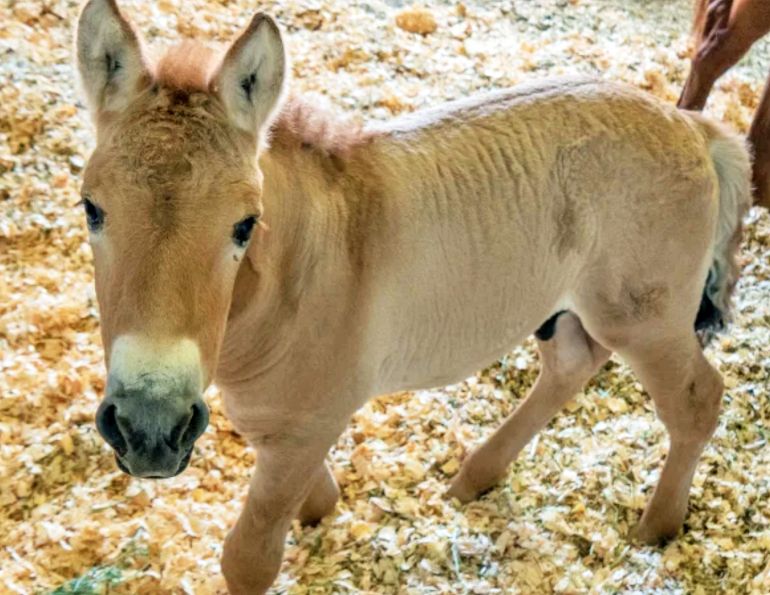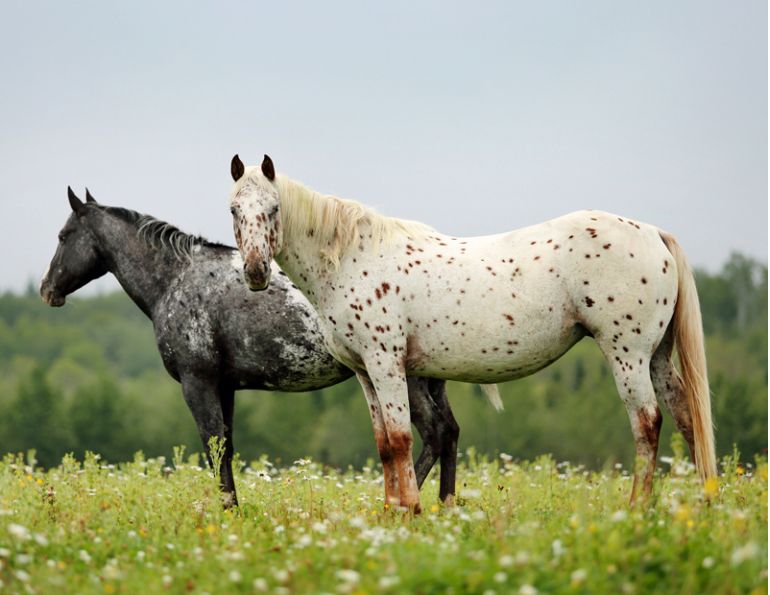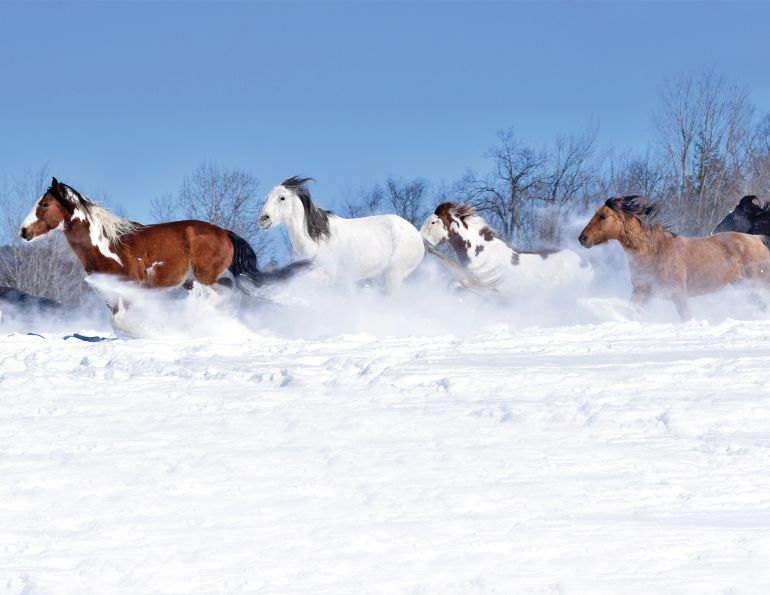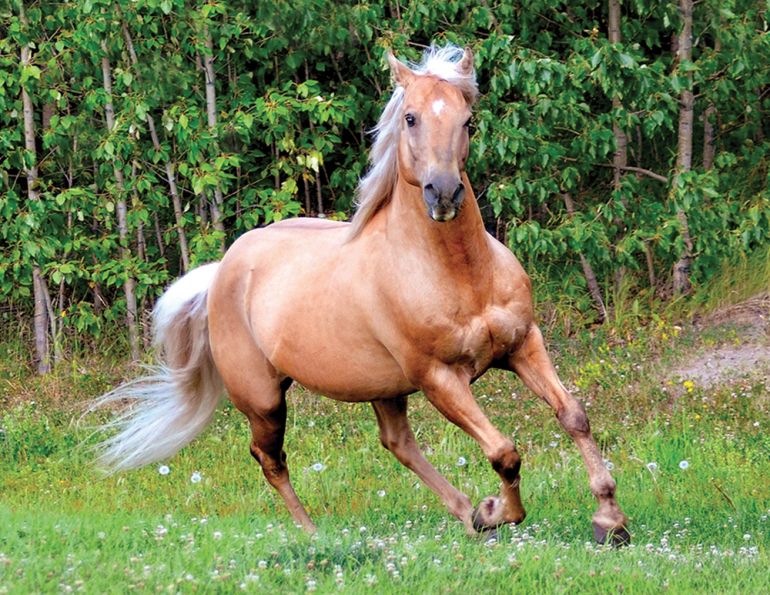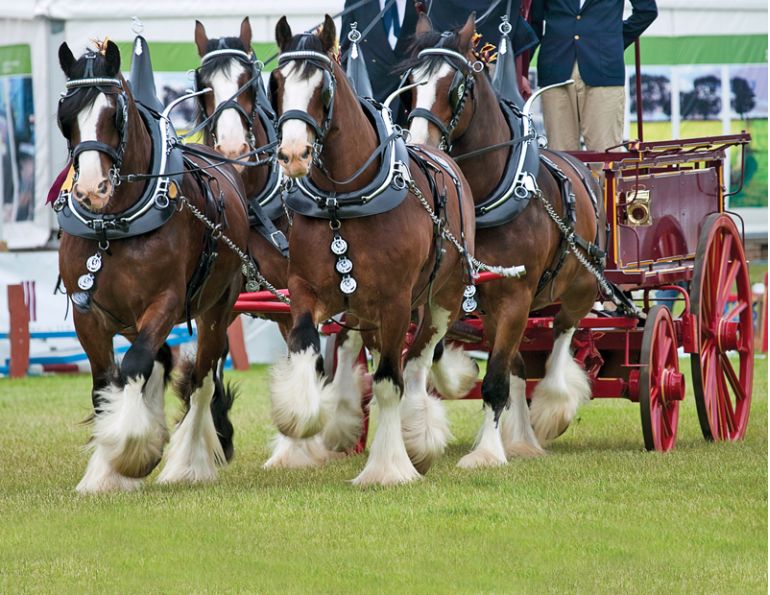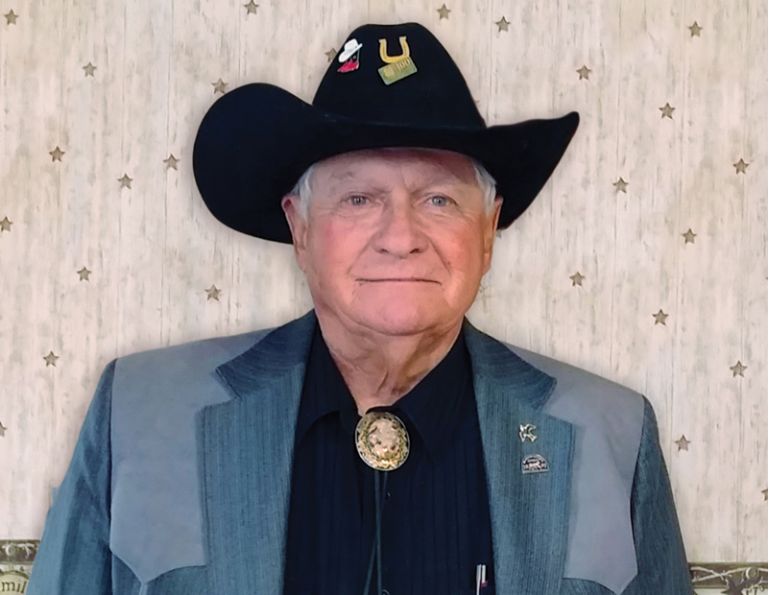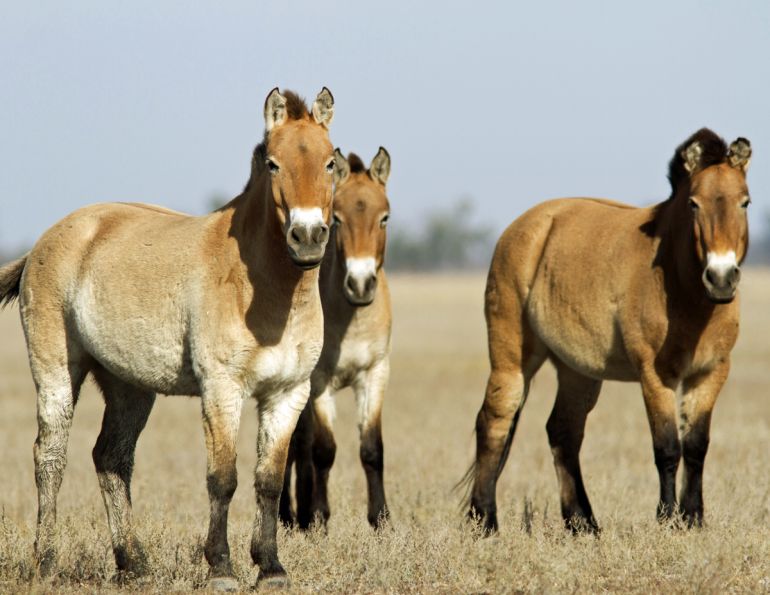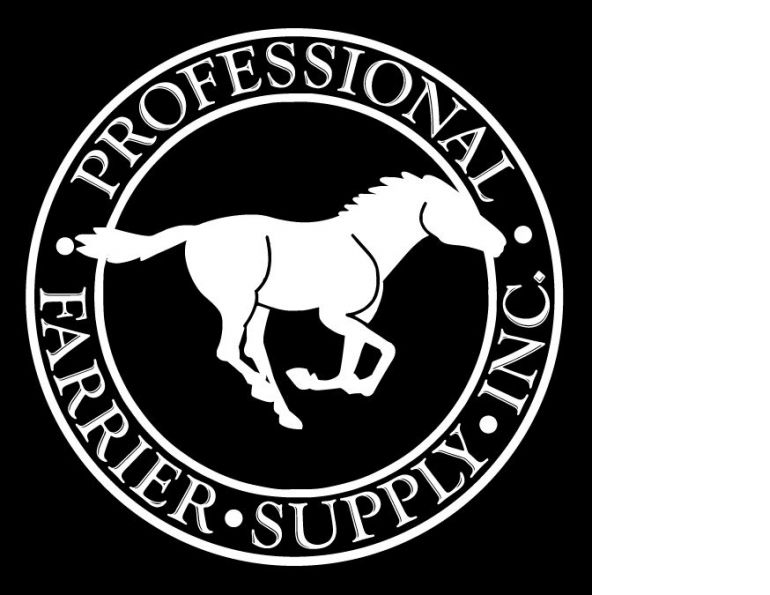Little Horses of the Big Woods
By Ian Kennedy
Sitting in the trees, the boys could feel warmth in the air, the breath of the herd rising to their feet. Pounding hooves echoed through the oaks like a warning bell, chasing Bill and his friends into the low branches. Here they sat watching dozens of horses pass below. Through Ontario’s Carolinian woods, the boys often followed snake-like “miikaans,” the little roads created by the horses. Emerging from the trees, the herd would wade across the shallow waters of the river to a small island, cooling themselves while they escaped the bugs. When the drumming of hooves had faded, the boys would drop from the branches like apples in autumn and continue on their way.
Opening his eyes, the scene was still vivid in Bill Sand’s mind.
Standing in a pasture at TJ Stables near Chatham, Ontario more than half a century later, Sands, now in his seventies, undoubtedly looks like any other visitor. He is dressed in a blue-checked shirt, jeans, a ball cap, and ostrich-leather boots. In one arm is his grandson; his other arm is outstretched pointing at the Ojibwe spirit horses, the same horses from his childhood. Memories rush back.
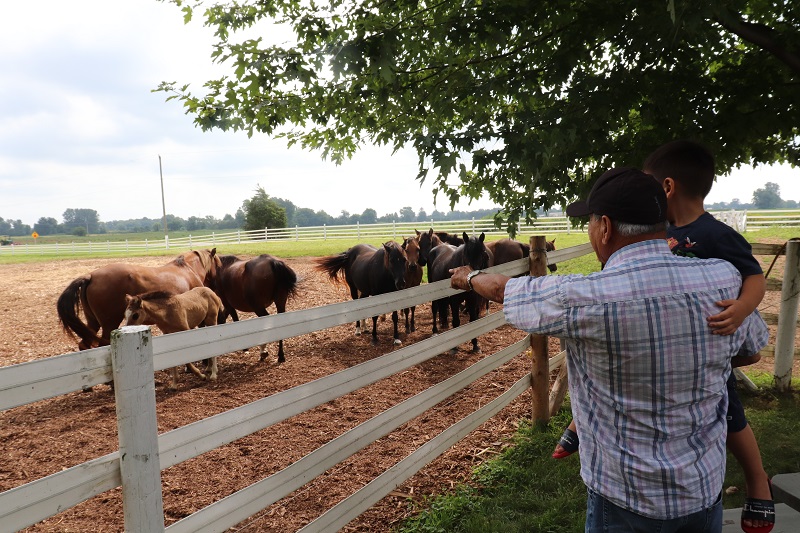
At TJ Stables, Bill Sands shares stories of the Ojibwe spirit horses with his grandson. Photo: Ian Kennedy
For centuries, these wild Ojibwe spirit horses, the “Little Horses of the Big Woods,” wandered freely on Walpole Island First Nation, an Indigenous community bordering Ontario and Michigan at the mouth of the St. Clair River.
The Ojibwe spirit horses, also known as Lac La Croix Indigenous ponies, are somewhat smaller than other breeds. Standing between 12.2 and 14.2 hands, the sturdy spirit horses have thick, lion-like manes and hairy ears. They are hardy, with small, hard feet, and strong cannon bones.
Related: A Country Built on Horsepower
Their predominate colour is dun, and many have a dorsal stripe running from neck to tail, with subtle striping down their legs.

Bill Sands recalls how he and his friends would climb the trees and watch the Ojibwe spirit horses gallop through the forest below. Photo: Ian Kennedy
In his youth, Sands and his brother would catch and break the ponies, building corrals for their favourites. At the annual Walpole Island Fair, youth including Sands would choose a pony and enter the pony races. The Fair and races were a popular attraction for locals, and for tourists who arrived for the event via steamers during the first half of the 1900s from across the Great Lakes. Tourists would wander the Island to see the famed ponies roaming the prairies, grazing languidly before chasing these outsiders from the beaches as a herd appeared and splashed into the water.
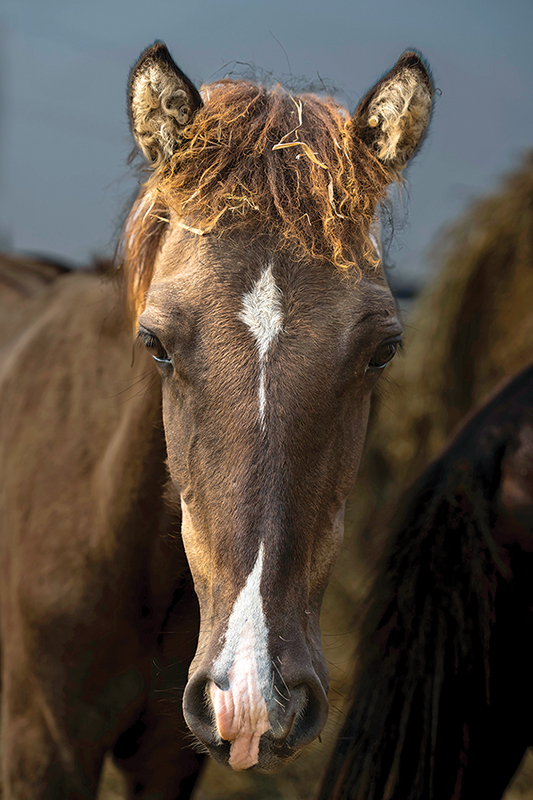
The Ojibwe spirit horses are friendly and intelligent, small and sure-footed, and very hardy, with hairy ears to help protect them from cold and insects. Historically, the pony was used by the Ojibwe people to ride trap lines, pull loads of wood and ice, and haul sleighs. Photo: Robert Alexander

The ponies once shared their territory with the Ojibwe people, and ran wild in the boreal forests of Northwestern Ontario and Northern Minnesota. Today they are used in programs promoting Indigenous heritage, in equine-assisted therapy, and in tourism. Photo: Robert Alexander
However, over time the ponies, once valued, became a nuisance. As settlers pushed the Indigenous people of the land from traditional hunting and gathering grounds, agriculture became a growing industry on the delta islands of Walpole. Soon, acres of once protected, sacred soil, were being taken for farmland at an unimaginable pace. When the wild ponies were deemed to be eating crops and damaging farmland, a decision was made that they must go.
First, the horses were sold to outsiders. Next, they were rounded up for slaughter at a nearby rendering plant. Finally, the remaining horses were hunted. By the mid-1970s, only four were known to remain anywhere on earth. These mares — Lillian, Bishkee, Diamond, and Dark Face — the last known representatives of the breed, were slated for extinction when in 1977 Canadian Health officials deemed them a “health risk” (missionaries at the reservation considered it inappropriate for children to witness the horses mating), and ordered their euthanization. That is, until a group of men took action. In what would be called the “heist across the ice,” under cover of darkness they rescued the mares and drove over a frozen lake at Lac La Croix in Northern Ontario, taking the horses to a ranch in Minnesota for protection.
Related: Przewalski's Horse - Wild No More?
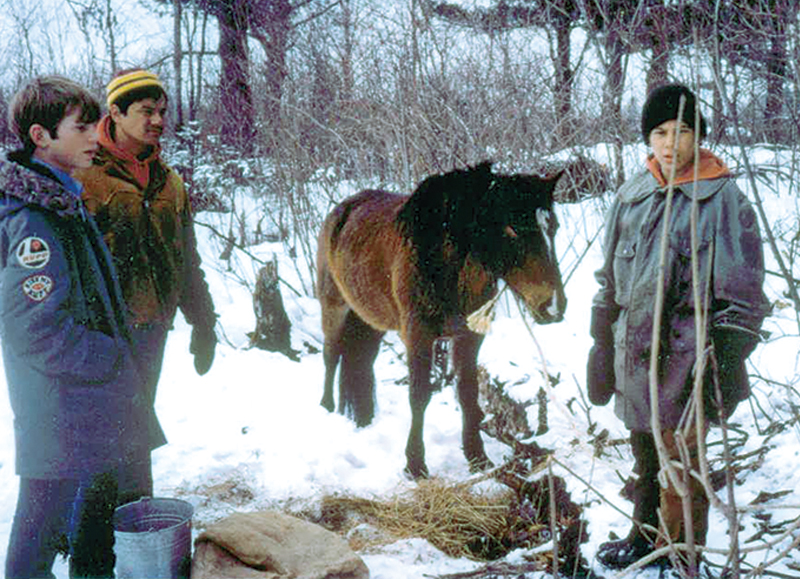
In 1977, the four remaining mares were rescued and taken across Lac La Croix from Canada into the United States under cover of darkness. Pictured is the youngest rescued mare, Lillian. Photo courtesy of ojibwehorse.ca
As a girl, Terry Jenkins, the owner of TJ Stables, had heard about the Ojibwe spirit horses from her father. She and her Metis husband, John Basden, spent many years searching for the shaggy horses until 2019 when they found the descendants of those four surviving Ojibwe spirit mares, now a small herd, living on a farm near Fort Frances, Ontario.
When Jenkins first saw the spirit horses, she was overcome by an intense feeling emanating from the animals.
“Their heads came up out of the lush grass and immediately they started toward us, circling around me, surrounding me with a power I had never experienced in all my six decades,” she described of her first moments with the horses. “Their tiny hooves beating a rhythm of power. An unmistakable flush came through my body, from these little horses, of an overwhelming love that I only experienced when I held my newborn infant in my arms.”
Jenkins and Basden had come to purchase 14 horses, but within 20 minutes of their arrival, the matriarch of the herd gave birth to a filly foal, which Jenkins named Eshki-Aanj-Maajtaang, Ojibwe for “new beginning.” And it was a new beginning.
Arriving at their farm near Chatham, more than 1400 kilometers southeast of Fort Frances, Jenkins set about breeding the horses, growing her herd in hopes of one day returning them to Walpole Island, which is located only 30 minutes from TJ Stables.
The same power Jenkins felt among the horses during her first encounter has since provided peace and healing to visitors. Among them are residential school survivors from Walpole Island, like Bill Sands.
Related: Racial Bias and Ethnic Diversity in Canada's Horse Industry
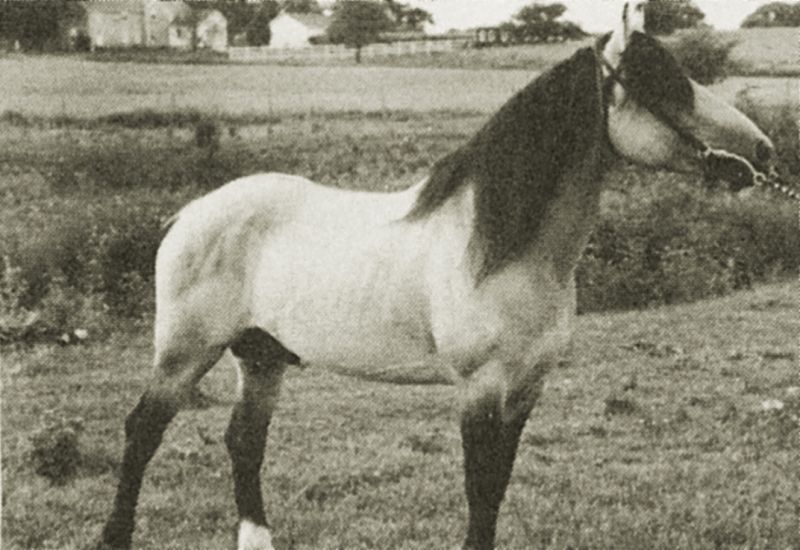
With no remaining stallions, the four Ojibwe mares rescued in 1977 were bred to registered Spanish Mustang stallion, Smokey (SMR169). The first colt, Keokuk, was born in 1980 and a second, Nimkii, was born in 1985, forming two new Lac La Croix pony bloodlines. Photo courtesy of ojibwehorse.ca
The child who loved catching and riding the spirit horses was taken to the Mohawk Institute. One morning as usual, Sands left for school in the nearby town of Wallaceburg, but when the bus returned to his house that evening to his waiting parents, Sands did not get off.
“We went on the school bus, school bus came home. I was 11 years old and I didn’t get off the bus, and the Indian Agent was gone, and there was no telephone at the time, and my parents didn’t have a car. My sister said my mother almost died from that shock,” Sands recalls. “It was the worst thing ever in her life.”
And his.
On his first day at the Mohawk Institute, Canada’s oldest residential school, located near Brantford, Ontario, Sands was repeatedly beaten.
“I got beat up… every day for the first two weeks. Before school, after school, and after dinner; it was just a common thing. Not just me; a lot of the other boys as well. There [were] always fights. And the staff promoted it. They pushed the big guy into the little guy, or pushed the little guy into the big guy, and then the fight was on.”
At residential schools, Indigenous youth were punished for speaking Indigenous languages, and their culture and practices were stripped away. Children were subjected to abuse and neglect. Thousands died in these facilities across Canada. It was a cultural genocide.
“I was there for four years; it was the toughest four years of my life, and it still affects me today,” Sands says of the trauma he endured.
By the time Sands returned to Walpole Island in 1961, where he would spend the next six decades as a hunting and fishing guide, the Ojibwe spirit horses were in rapid decline.
For years, Sands has been learning to speak of his trauma, and to heal. The opportunity to see the Ojibwe spirit horses that were removed from Walpole Island, like he and his culture were removed, was another step in Sands’ journey.
“For as long as I can remember my dad talked about the horses,” says Sand’s daughter Alyssa, who watched her father visit with the horses at TJ Stables. “It was an emotional experience for me to see him reconnect to something that brought him so much happiness as a little boy.”
Related: Painted Warriors - Horse Programs from an Indigenous Perspective
“It felt good to see them again,” says Sands. You could almost see his mind jumping back through the years, to a time when he was free. To a time before he was taken away, before the horses were taken away.
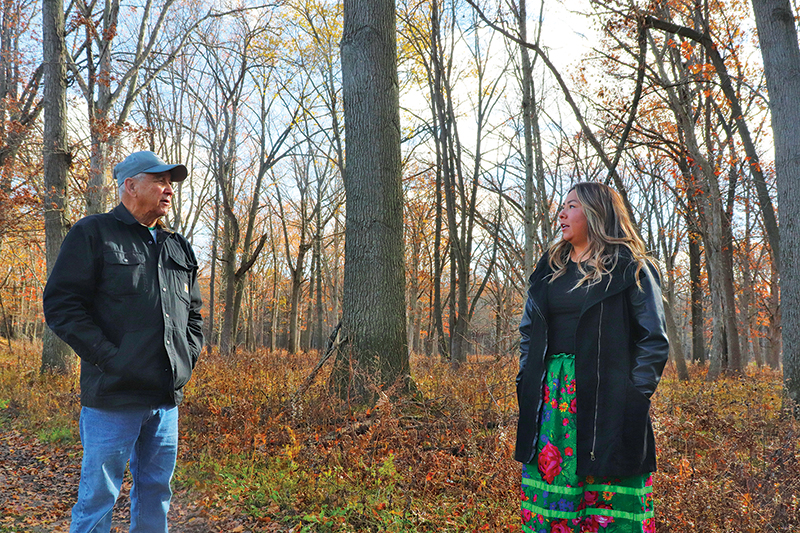
Bill Sands’ daughter, Alyssa, says that her father has talked about these horses for as long as she can remember. Photo: Ian Kennedy
Through their “Awaken Your Spirit” Spirit Horse Encounter, others can see the Ojibwe spirit horses at TJ Stables as well, whether for a brief visit, or an overnight stay to wake to the soft nickers of the horses. Jenkins is using the program to educate the public about the animals and to continue to fund the revival of the breed.
Despite her efforts, less than 200 Ojibwe spirit horses exist globally. In Canada and the United States, dedicated breeders now strive to protect this critically endangered breed. Jenkins hopes that someday she’ll be able to return her herd to Walpole Island, to live protected by their original stewards. But there is still work to be done. In the meantime, she hopes more residential school survivors like Sands can find healing in the horses, and that a new generation of Indigenous youth can hear the oral history of the animals, and those who rode them.
Indigenous communities across Canada have experienced an abundance of loss including their children, language, and culture. The Ojibwe spirit horses were almost lost, too. Survivors like Bill Sands are now more openly speaking their truth, and people like Terry Jenkins and John Basden are working toward reconciliation; toward bringing back what was once lost. With any luck, there will again be a day when the drumming of hooves across Walpole Island resonates through the trees, chasing playing children into the branches and bringing life and peace to the people.
For more information, please visit:
Related: Canada's Wild Horses - An Uncertain Future
Related: Alberta's Wild Horse Management Plan
Main Photo: A foal at TJ Stables near Chatham, Ontario. Credit: Robert Alexander



